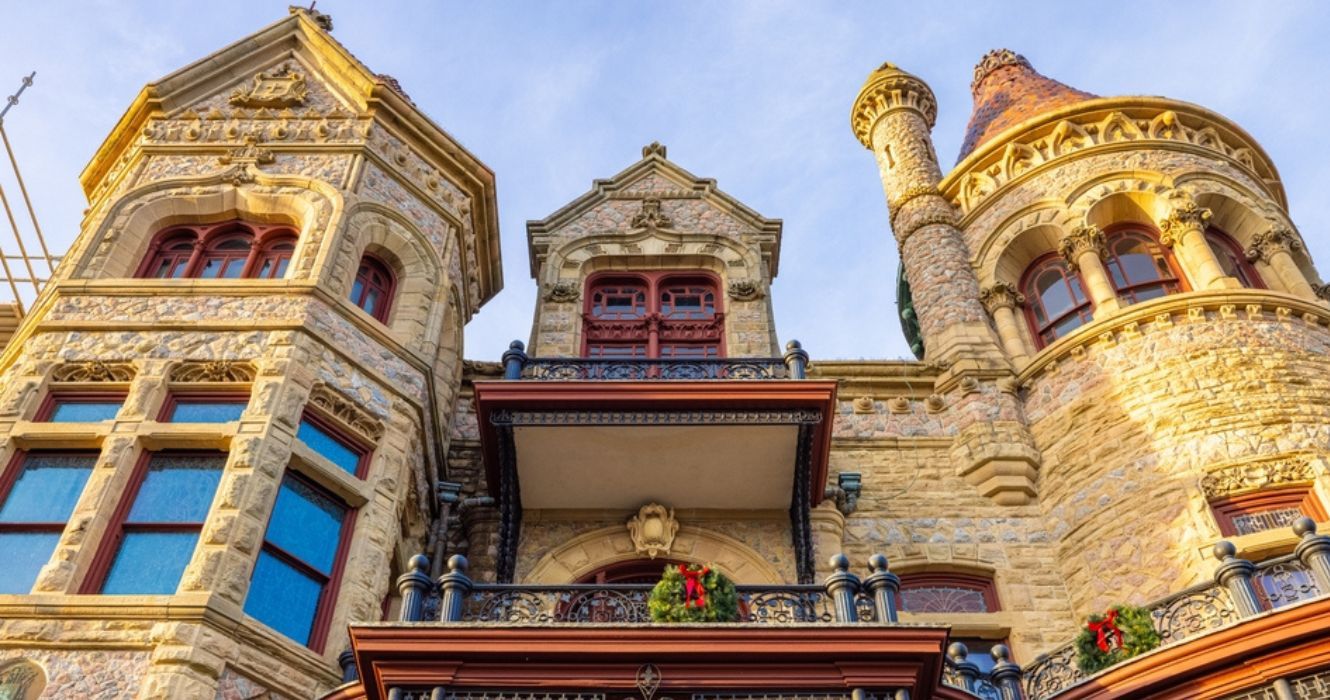Those who love visiting towns to walk in the glory of their storied past—have a feast in store at Galveston, Texas. Galveston was once the melting pot of Victorian high culture in the whole of Texas. At a time when Houston was still a backwater town with streets that, on a rainy day, would sink people down to the waist, Galveston’s magnificent stores—that lined its clean, paved streets—were selling such popular items as English carpets and rosewood pianos.
Today, Galveston showcases its Victorian side, a time capsule of that bygone era. However, it’s not just the grace or glory of her architectural landscape. There are many things to do in Galveston. And the beauty is that even with a day, one can get to the soul of this charming town whose highlight is its Historic District. Aside from this fascinating history, we reveal to you the Victorian homes that line Galveston’s Historic District.
The Glory Days of Galveston And Its Charming Historic District
Caught between a sea that’s restive and relentless, and a past that’s full of faded glory, Galveston was once among the country’s richest cities—as controlled for the number of inhabitants. For perspective, in 1900, only Rhode Island’s capital city Providence boasted a higher per capita income.
Slightly over a century ago, Galveston was the largest city in the Lone Star State, and the most important as well. Its main commercial street, which later became known as the Strand, was referred to as the Wall Street of the South.
Between San Francisco and New Orleans, Galveston glimmered and glittered without a single rival.
Whether it was the first electric lights or the first telephone; the first hospital or the first opera house, Galveston had it before any other town in Texas. Of course, other amenities would follow.
Upscale facilities like the Galveston Country Club, the first country club in Texas, provided lush and serene grounds where the city’s wealthy as well as the middle class—would merrily tee to the good times.
It boasted many elegant hotels such as the Tremont House Hotel, appropriately labeled as the “Pride of the South.”
Even in the field of business; and in industries such as insurance, banking, and real estate, Galveston was a fascinating trailblazer. Its aristocrats lived lavishly and splashed money on anything that would gratify their expensive senses and styles.
This included building Victorian-style palatial residences, sometimes with brick imported all the way from Boston.
Galveston And The Roots Of The Victorian-Style Architecture
As late as the 18th century, the area that would later be known as Galveston was a swampy island where Native people would only go fishing, hunt, or bury their dead.
Then as the sun was setting on that tempestuous century, a Spanish colonial governor instructed Jose de Elvia, a cartographer and an experienced explorer, to survey the areas along the coast of Texas, then a region that formed part of what was called the New Spain.
In July 1786, de Elvia found himself in a swampy coastal area near a river and decided to name this place after his patron. The name of his patroon was Bernardo de Gálvez. And that’s how Galveston, later incorporated as a city in 1839, came to own its name.
Galveston would grow in leaps and bounds, mostly as a result of its port, which, at the time, was the most active one west of New Orleans.
However, the city’s architectural landscape would undergo a dramatic change when Nicholas J. Clayton, an Irish immigrant in the high noon of his craft, arrived in the bustling city in 1972—to supervise the construction of the First Presbyterian Church.
His architectural contribution, distinctively Victorian, was so marked that some have referred to the 1870s, ‘80s, and ‘90s as the "Clayton Era."
How Galveston’s Homes Maintain The City’s Victorian Legacy
Today, the Strand, Galveston’s Historic District, is the site of many homes and buildings that spot an architectural elegance that hankers back to Clayton’s Victorian era. Many of these buildings have ornate designs and exude a look that seems determined to retain the memory of the city’s good old days.
One of these is Bishop’s Palace, a 19,082 square feet Victorian-style house completed in 1892—that was built for Colonel Walter Gresham, a noted lawyer and representative of the 53rd Congress. By many accounts, Bishops Palace is Galveston’s grandest and most famous building.
- How Much Is The Admission Fee To Galveston’s Bishops House? Adults will pay $14 while those aged 6 to 18 will pay $9. For children under 6 years, entry is free.
Thanks to initiatives by organizations such as the Galveston Historical Foundation as well as those of private homeowners, Galveston’s Historic District is still an architectural throwback to its glorious past, even if that past is only dim and distant.

